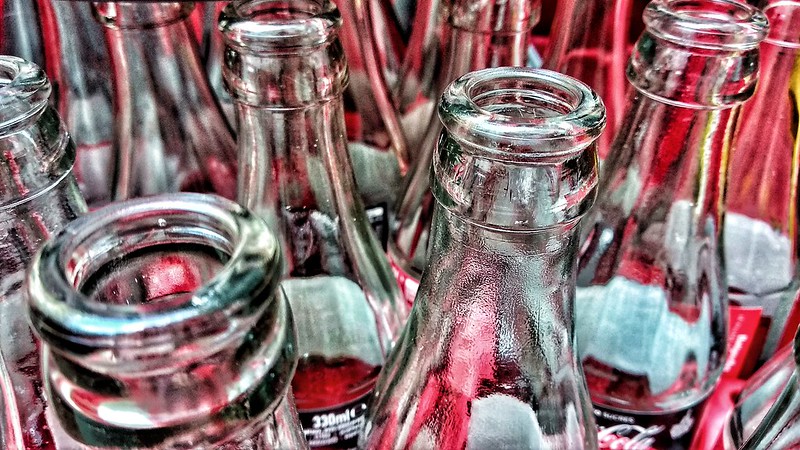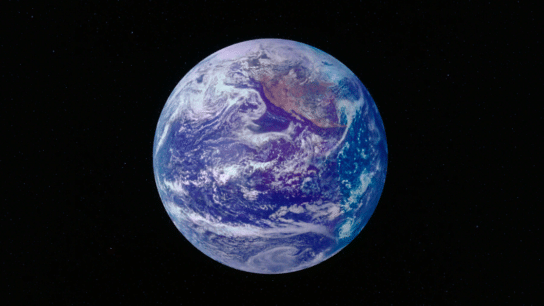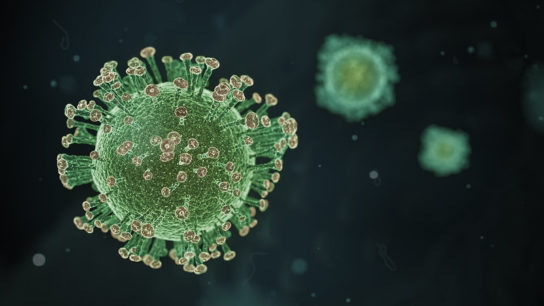A study comparing the environmental impacts of various single-use beverage containers has concluded that glass bottles have a greater overall impact than plastic bottles, primarily because they are heavier and require more energy to manufacture. The study also identified more environmentally-friendly alternatives to plastic bottles for a range of beverage types: recycled aluminium cans are the most sustainable containers for pressurised or ‘fizzy’ drinks, while Tetra-pak and milk cartons are the least impactful packaging for fruit juice and milk respectively. These findings could help to catalyse a shift towards more sustainable beverage packaging and mitigate the environmental harm caused by plastic pollution.
__
Plastic bottles are the world’s most ubiquitous drinks containers. A million are sold each minute and their production is increasing every year; by 2021, 583 billion are expected to be consumed annually. But as these bottles are largely single-use, many of them are discarded and dumped in the earth’s ecosystems, where they constitute a significant portion of all environmental waste. Of the 32.5 million trash items collected in the Ocean Conservancy’s international beach cleanup in 2019, plastic bottles and plastic bottle caps were the third and fourth most prevalent items after food wrappers and cigarette butts, accounting for roughly ten percent (if not more) of all the litter plaguing the planet’s coastlines.
Study
Environmental experts at the University of Southampton have conducted a study in an attempt to address the ecological implications of this issue. Two fundamental questions underpinned their research: What attributes do plastic bottles possess which have led to them becoming so indispensable, yet so toxic? Are there any equally effective alternatives which do not incur the same environmental impact?
To answer the first question, the researchers examined the two most common types of plastic bottle, made from PET (polyethylene terephthalate) and HDPE (high density polyethylene), outlining a range of properties which make them highly effective liquid containers: they are lightweight, durable, cheap to produce, safe, convenient and versatile (capable of keeping liquids hot or cold).
However, they also identified drawbacks for both materials. For example, plastic bottles have a limited capacity for recycling, due to the fact that plastics consist of polymer chains which shorten each time they are recycled. For this reason, 91% of all plastics are not totally recycled – rather, they are usually remoulded or ‘downcycled’ into lower quality products.
Moreover, the manufacturing process requires high levels of energy and generates carbon dioxide emissions, while the extraction of raw materials like crude oil – which constitutes just one phase of production – creates large amounts of solid wastes, depletes the ozone layer and emits petroleum hydrocarbons into the atmosphere.
Having evaluated the environmental impacts of both PET and HDPE plastic bottles, the researchers proceeded to carry out a life cycle assessment of four other common beverage containers, measuring their ecological footprint at every stage of their existence. The environmental impact of glass bottles (new and recycled), Tetra-pak cartons, milk cartons, and aluminium cans (again, all both new and recycled) were all assessed while taking into account their suitability for storing three particular types of beverage: pressurised or ‘fizzy’ drinks, fruit juice and milk.
Given that each beverage type has particular storage requirements, the researchers expected certain containers to be more suitable for some drinks than others. For example, while fizzy drinks need packaging which can be pressurised, milk containers need to facilitate refrigeration and fruit juices are often unrefrigerated and hence have specific hygiene requirements.
You might also like: Human-Made Objects Will Soon Outweigh All Living Biomass on Earth
Results
The results of the life cycle assessment indicated that more sustainable alternatives to plastic bottles exist for all three types of beverage: recycled aluminium cans were found to be the most environmentally-friendly packaging for pressurised drinks, while Tetra-pak and milk cartons were the least impactful containers for fruit juice and milk respectively. Glass and recycled glass bottles were the most impactful packaging for every drinks category, with plastic bottles always the second-most impactful.
These findings support the results of many previous, smaller life cycle assessments, demonstrating that, while plastic bottles generally cause more environmental impact at the end of their life cycle, glass bottles have a more damaging overall effect, largely because they are heavier and require more energy for their production.
Future
The research team at the university hopes that the findings of this study will help to illuminate a more sustainable future for beverage packaging and society as a whole. Ian Williams, Professor of Applied Environmental Sciences at Southampton, said, “We hope our study will help inform public and commercial debate over the suitability of some types of packaging that we all use in our daily lives, and lead to swift and decisive changes in the drinks industry to find more environmentally-friendly alternatives as a matter of some urgency.”
Alice Brock, postgraduate researcher and co-author of the study, called for large-scale societal changes aimed at mitigating the ecological impacts of single-use drinks containers: “Based on the evidence, society needs to move away from single-use beverage packaging in order to reduce environmental harm and embrace the regular everyday use of reusable containers as standard practice.”
She added, “Changes in infrastructure and potential incentives to use reusable packaging should be implemented and policies such as the proposed coffee cup tax should be adapted for single-use beverage packaging.”
While infrastructural changes certainly would help to reduce the amount of single-use plastic that is manufactured and then discarded, they address only one side of the issue. The key to solving the global plastic problem must be to target both production and disposal and to combine sustainable infrastructure with a strategy for eliminating the existing plastic waste that pollutes the planet.
Featured image by: Flickr

















